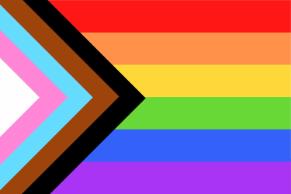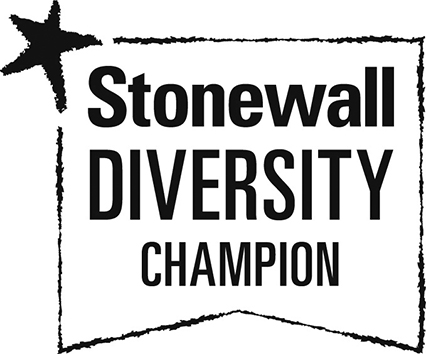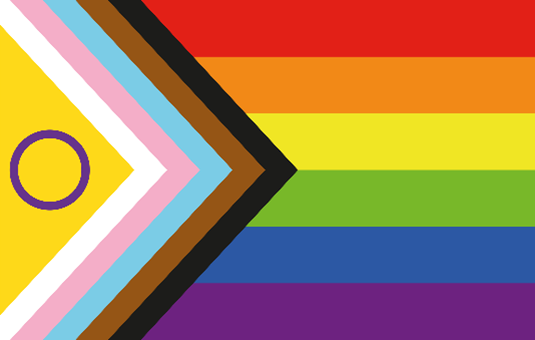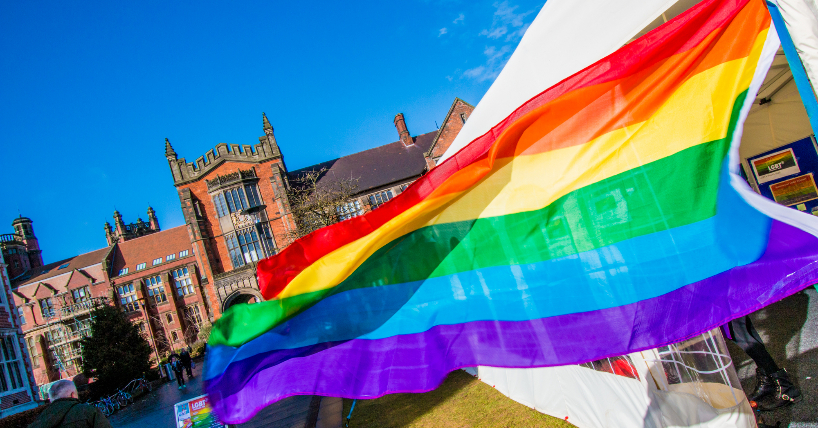Sexual Orientation
Sexual orientation is about who you are attracted to and who you feel drawn to romantically, emotionally, and sexually. It is a person’s sexual attraction towards their own sex, the opposite sex, to both sexes, or lack thereof.
Let's talk about sexual orientation
The Equality Act
Sexual orientation is one of nine protected characteristics under the Equality Act. The Equality Act 2010 says you must not be discriminated against because:
- you are heterosexual, gay, lesbian or bisexual,
- someone thinks you have a particular sexual orientation (this is known as discrimination by perception),
- you are connected to someone who has a particular sexual orientation (this is known as discrimination by association).
The law includes how you choose to express your sexual orientation, for example, through your appearance, or places you visit.
LGBTQ+
‘LGBTQ+’ is an abbreviation for Lesbian, Gay, Bisexual, Transgender, Queer or Questioning. The ‘+’ symbol recognizes other gender identities and sexual orientations. Sexual orientation can be very diverse and there are many different terms - you can find out more in the Inclusive Language Guide. LGBTQ+ is used in this section as an ‘umbrella’ term when referring to the community.
The 2021 census data reports that in England and Wales, around 1.5 million people (3.2% of the population aged 16 years and over) identified with an LGB+ orientation (“Gay or Lesbian”, “Bisexual” or “Other sexual orientation”). Although identifying as a member of the LGBTQ+ community has become more accepted in the UK in the past decade, many members still regularly experience discrimination in the workplace. Even though universities tend to be more diverse and accepting environments, not all individuals who identify as LGBTQ+ feel safe and supported in the workplace. This section will explore the experiences of members of the LGBTQ+ community in academia, and help you better understand what you can do to support them and create welcoming and inclusive spaces.
Sexual orientation and discrimination
Homophobia and biphobia
People from the LGBTQ+ community may experience homophobia. Homophobia is the irrational hatred, intolerance and fear of the LGBTQ+ community. Homophobia can involve bullying, harassment and violence. However, it can also be disguised in “jokes” and comments such as “that’s so gay”. This is a microaggression which is explained in the Glossary. Queerphobia is also used as an umbrella term concerning fear and hatred of non-heterosexual and non-cisgender individuals.
Bisexual people may also struggle with ‘biphobia’, which is where their sexuality is seen as invalid. Biphobia is the prejudice and hatred towards bisexual people, and such behaviour includes making jokes or comments based on myths and stereotypes. Bisexual people are sometimes assumed to be straight based on the gender of the person they are in a relationship or are romantically involved with, which can often lead them to feel excluded from LGBTQ+ spaces.
Hate crimes and discrimination against people from the LGBTQ+ community are very common. A Stonewall report found that one in five LGBTQ+ people have experienced a hate crime or incident because of their sexual orientation and/or gender identity in the last 12 months. Fear of discrimination and abuse can impact many aspects of an individuals’ life, such as education, work and healthcare. For example, the report found that half of LGBTQ+ respondents experienced depression, 35% had hidden their sexuality at work for fear of discrimination, and 28% of LGBTQ+ students say they were excluded by other students because of their sexuality. 1 in 7 had avoided healthcare treatments for fear of discrimination because they are LGBTQ+.
Homophobia is a societal problem and undoubtedly impacts the quality of life for an LGBTQ+ person. It is up to all of us to call out homophobic and biphobic behaviour at every instance to create a culture of inclusion.
Sexual orientation in academia and research
Coming Out: Benefits and Risks
Everybody wants to be their authentic selves, professionally and personally. You may not have thought about it, but ‘coming out’ isn’t something that someone does just once, but many times: to family, friends and colleagues. Disclosing your sexual orientation is very personal, particularly because being out in the workplace carries both risk and benefits for LGBT+ colleagues.
Being out in the workplace comes with the risk of discrimination. This discrimination is a problem in academia. A recent study on the experiences of LGBTQ+ scientists found that 28% of respondents stated that they had at some point considered leaving the workplace because of the climate or discrimination towards LGBTQ+ people. 16% of all respondents had personally experienced harassment or exclusionary behaviour.
Moreover, researchers report negative feelings as a result of unwelcoming environments and having assumptions made about their identity. It can be awkward to correct someone, and internally having to contemplate whether to correct someone takes time and energy. Researchers may also worry about the consequences of correcting someone in a senior position, and if this may impact them negatively in any way.
Benefits of being out include feeling like you can be open and authentic, role-modelling the acceptance of diverse communities, and providing support and mentoring for colleagues and students who are also members of the LGBTQ+ community. Colleagues who are out can be positive role models and increase visibility of LGBTQ+ individuals. Visibility is imperative to create a culture of acceptance and inclusion, so everyone can be themselves in the workplace. It can also encourage conversations around the topic and create safe spaces for learning.
500 Queer Scientists is a visibility campaign for LGBTQ+ people and their allies working in Science, Technology, Engineering and Mathematics (STEM) and STEM-supporting jobs. It is a source of role models and personal stories, as well as some key statistics and further reading about being LGBTQ+ and working in STEM.
Fieldwork and international travel
While the LGBTQ+ community are protected by the law in the UK, the same cannot be said in all countries, where there are not equal rights or in some cases no rights. This can impact on the safety of colleagues when travelling, and perhaps impact on their career choices about where they can safely live and work.
Fieldwork is a fundamental aspect of research across many different disciplines. However, fieldwork may not be accessible for members of the LGBTQ+ community. Many researchers have reported that they have been in an area where they did not feel safe because of their identity, expression or presentation. Others have refused to do fieldwork because of concerns for their personal safety. It is important to support colleagues and create a safe space where they can share their concerns regarding accessibility.
Stonewall have produced a Safe Travels guide to highlight and address these challenges. The guide also addresses the importance of educating non-LGBTQ+ employees to ensure they don’t put their LGBTQ+ colleagues at risk when working internationally.
If you are organising an international trip with students or colleagues, perhaps for fieldwork, or a meeting or collaborative visit, think about the laws and morals of the country or countries in question. Make this part of your travel risk assessment –you can check what your institution has. Have conversations with those travelling to make sure they feel comfortable with the trip. For example, you could say “There is a conference hosted in X that might be of interest to you. Would you feel comfortable travelling to X?”
Collecting data around sexual orientation
Collecting research data on gender, sexual orientation and sex
Billie Moffat-Knox from the School of Psychology has collated some information around inclusive language and appropriate response options for collecting data about participants’ gender, sexual orientation, sex (if relevant), ethnicity and disability/neurodiversity/health conditions. Collecting and reporting this data improves the representation of individuals within scientific research.
Below are some examples of how to ask participants what their gender, sexual orientation and sex are.
What is your gender*? (Where Cisgender means that you identify with the sex you were assigned at birth, i.e. with the sex on your birth certificate)
- Cisgender Woman
- Trans Woman
- Cisgender Man
- Trans Man
- Non-binary
- Self-describe: [open text-entry box]
- Prefer not to say
What is your sexual orientation*?
- Asexual
- Bisexual
- Gay
- Heterosexual/Straight
- Lesbian
- Pansexual
- Queer
- Self-describe: [open text-entry box]
- Prefer not to say
*The most inclusive option for questions about both gender and sexual orientation would be to give an open text box instead of a list of options. For example, there are ~40 sexual orientations because there are multiple gender identities and thus multiple intersections of attraction. However, this is challenging for data collation and analysis, and participants often write ambiguous or problematic responses, such as ‘normal’ or ‘natural’. Providing a list such as the above using inclusive language is considered a fair compromise.
Note: We should only ask participants about their sex if this is pertinent to the research.
What is your sex (assigned at birth)?
- Female
- Male
- Intersex [optional text-entry box to self-describe could be provided]
- Prefer not to say
What actions can you take?
What actions can we all take? As a researcher, research enabler or leader in research
- Be conscious of what is said around sexuality. Anti-LGBTQ+ jokes and comments are harmful. Be mindful of what you say, and where possible, let your colleagues, friends and family know that these comments and jokes are offensive.
- Don’t make assumptions. Don’t make assumptions about your colleague’s sexuality. It’s intrusive and unnecessary.
- Take time to educate yourself on the LGBTQ+ community. It is not up to the LGBTQ+ community to educate you. Self-directed learning about the issues that affect the LGBTQ+ community is important. It’s okay to ask questions, but make sure you do it in a sensitive way, where everyone is comfortable. Check out the section below, ‘Learn more and explore’, for resources to engage with to continue learning.
- Be visible in your support to the LGBTQ+ community. Newcastle University have rainbow lanyards. Wearing one shows your commitment to providing a safe and comfortable environment for all of our LGBTQ+ colleagues and students. If you would like to know more about what the rainbow flag represents, and why it’s important to take pride wearing a rainbow lanyard, you can read this blog post. There is now a Pride Progress Flag which contains the previous horizontal rainbow colours, now with an arrow that highlights current inequalities for Black & Brown, trans & non-binary, and intersex members of our community.
What additional actions can you take as a leader in research?
- Encourage your team members to get involved with events to support the LGBTQ+ community. LGBTQ+ history month runs every February and Transgender Awareness Week runs from 13th to 19th November each year.
- Visibly advocate and role model speaking up against homophobia/biphobia. Role model behaviour that calls out homophobia/biphobia and set this as an example to others.
Learn more and explore

Throughout this page we have linked to articles, studies and books which you can explore to increase your understanding of sexual orientation discrimination. You may also wish to check out our page about Allyship to help understand the various ways that we can be an ally to support our colleagues and students. The BBC has produced a resource '10 ways to be an LGBTQ+ Ally' which you can also refer to.
There is so much out there about experiences of being LGBTQ+ in the workplace, including academia, and so much to learn. We recognise that not everyone has the same learning styles, so to complement some of the written information and resources listed throughout this section, below there are a range of video and podcast recommendations to engage with, as well some further research articles that may interest you.
The Newcastle University Library site also hosts a guide to highlight useful information around LGBTQ+ equality. You can also check out our EDI Toolkit Reading List on the library’s EDI page for a summary of books to engage with around the protected characteristics.
Blogs and short articles
- Do LGBTQ scientists still face discrimination in academia? (also available as a recording)
- How LGBT+ scientists would like to be included and welcomed in STEM workplaces – Kendal Powell et al
- Discrimination drives LGBT+ scientists to think about quitting – Elizabeth Gibney
- Gay academic: “I came out to all my colleagues in an email” – Anonymous
- What’s it like to be queer in STEM? – Jennifer Leman
- Shattering the glass closet – Jenny Kurzweil
- Closeted discoverers: lesbian, gay, bisexual and transgender scientists – Jaqueline Ruttimann Oberst
- LGBT+ toolkit - Royal Society of Chemistry
Books
- Tomorrow Will Be Different: Love, Loss, and the Fight for Trans Equality – Sarah McBride
- Gender Outlaw: Of Men, Women and the Rest of Us – Kate Bornstein
- LGBTQ Leadership in Higher Education – Raymond E. Crossman
- Queer Precarity in Higher Education: Challenging the Institutional Structures: Challenging Institutional Structures – Matt Brim, Churnjeet Mahn and Yvette Taylor
Reports
- LGBT in Britain: University Report – Stonewall, 2018
- LGBT climate in physics: Building an inclusive community – American Physical Society, 2016
- National LGBT Survey Research Report – UK Government Equalities Office, 2018
- The experiences of lesbian, gay and bisexual staff and students in higher education – Advance HE, 2009
- Exploring the workplace for LGBT+ physical scientists - Royal Society of Chemistry, 2019
Peer-reviewed studies
- Stories from LGBTQ social work faculty: What is the impact of being “out” in academia? – Prock, Berlin, Harold & Groden, 2019
- Queer in STEM organizations: workplace disadvantages for LGBT employees in STEM –related federal agencies- Cech & Pham, 2017
- A View from the Academe: Lesbian and Gay Faculty and Minority Stress – Dozier, 2015
- Queer in STEM: Workplace experiences reported in National Survey of LGBTQA individuals in Science, Technology, Engineering and Mathematic careers – Yoder & Matthels, 2015
- Being who I am: Effective teaching, learning, student support, and societal change through LGBT faculty freedom – Orlov & Allen, 2014
- Sexual orientation microaggressions: "death by a thousand cuts" for Lesbian, Gay and Bisexual youth – Nadal & Wong, 2011
- Darwin’s Closet – The Queer Side of “The Descent of Man" (1871) – Brooks, 2021
- “Don’t ask, don’t tell”: The academic climate for lesbian, gay, bisexual and transgender faculty in science and engineering – Bilimoria & Stewart, 2009
Videos
- UKRI: Take pride in Research and Innovation- Discussion
- Things not to say to a non-binary person – BBC3, iPlayer (7 minutes)
Podcasts
TV and film
- It’s a Sin (Channel 4)
- Sex Education (Netflix)
- Heartstopper (Netflix)
Feeds to follow
- @Languagematters.ncl (Instagram)
- @RainbowNCL (X)
- @Rainbow_ncl (Instagram)
- @LGBTSTEM (X)
For Newcastle colleagues and students
Below you will find a list of services and resources available to colleagues and students at Newcastle University. You may find it useful to be aware of these either for yourself or to direct members of your team to.
Rainbow@NCL
Rainbow is a colleague and PGR network, established by and for members of the University community, with the purpose of challenging heteronormativity, supporting LGBTQ+ colleagues and students, and promoting inclusion of people of diverse genders, sexualities, and relationships. Allies are welcome to join the network and come along to events and activities. You can find out more and sign up to their newsletter through their website or follow them on Twitter @RainbowNCL or Instagram @Rainbow_ncl.
Wearing a rainbow lanyard
You may have seen people around the University wearing a rainbow lanyard, and also want to show your support for LGBTQ+ colleagues and students. You can also download a flyer that explains what the rainbow colours represent, and a why it’s important to take pride in wearing a rainbow lanyard. There is also a blog post on how colleagues felt when the University raised a rainbow flag for the first time. Newcastle University supports Northern Pride, and raises a Rainbow Flag outside the Armstrong Building and the Medical School to celebrate Pride Week and LGBTQ+ History Month. Individual Faculties and Departments purchase sets of lanyards – if you’d like one, you can try speaking to your Faculty EDI team.
Stonewall Diversity Champion
Newcastle University are a Stonewall Diversity Champion, demonstrating a commitment to creating an inclusive and accepting environment for LBGTQ+ colleagues and students. The Stonewall membership provides the University with access to a vast bank of information, experience and knowledge.
Travel Risk Assessments
The Newcastle University travel risk assessment forms have a section covering ‘personal factors’ which include ‘Gender and/or Sexual Orientation specific risks’ (e.g country specific laws in relation to LGBTQ+, barriers to accessing medical care, discrimination, harassment).
Training courses and workshops
You can access training on the Learning Management System (LMS) that covers the topic of sexual orientation (ncl login required).



